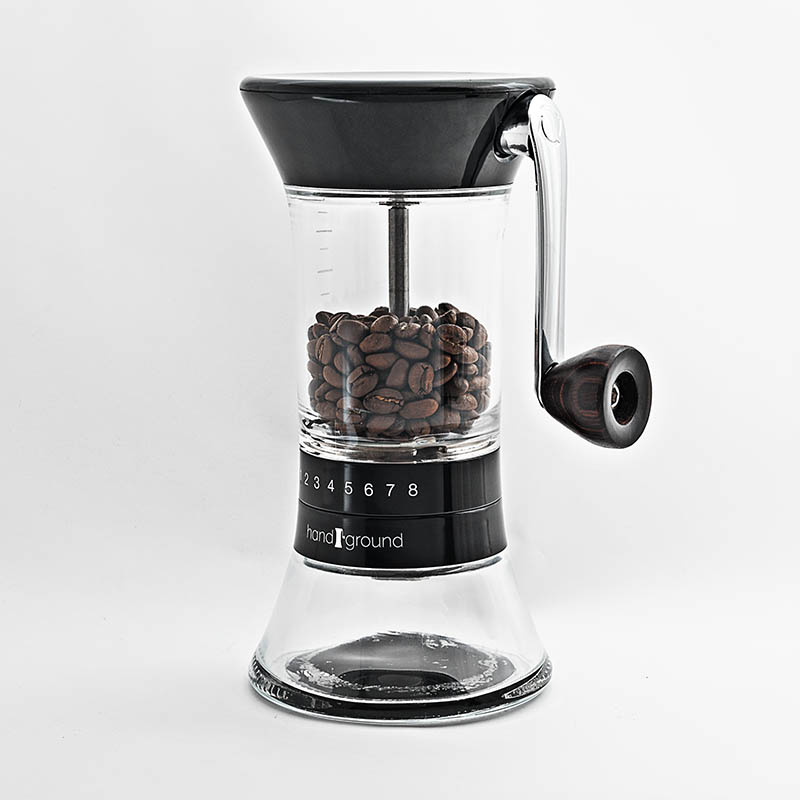To grind meat in a Ninja blender, cut the meat into small pieces and pulse it in the blender until the desired consistency is achieved. Grinding meat in a Ninja blender is a simple process that allows you to control the texture and freshness of your ground meat at home.
The Ninja blender’s sharp blades and powerful motor make it an excellent tool for grinding meat quickly and efficiently. Whether you want to make burgers, sausages, or meatballs, grinding meat in a Ninja blender is a convenient way to ensure the quality and flavour of your homemade ground meat.
We will guide you through the step-by-step process of grinding meat in a Ninja blender and provide some useful tips to help you get the best results.
Understanding The Ninja Blender
Understanding the Ninja Blender is key to unlocking its full potential, especially when it comes to grinding meat. This versatile kitchen appliance is renowned for its powerful performance and ability to handle various food preparation tasks. In this article, we will explore the features and capabilities of the Ninja blender, delve into the different models and variations available, and highlight the benefits of using a Ninja blender for meat grinding.
Features And Capabilities Of The Ninja Blender
The Ninja blender boasts an impressive array of features and capabilities that make it a must-have tool in any kitchen. Here are some key characteristics that set it apart:
| Feature | Description |
|---|---|
| High-powered motor | The Ninja blender is equipped with a robust motor that ensures efficient grinding and blending of ingredients, including meat. |
| Multiple speed settings | With its multiple speed settings, the Ninja blender allows you to adjust the grinding process according to your desired texture and consistency. |
| Durable blades | The blender’s razor-sharp blades are designed to handle tough ingredients, such as meat, and ensure a thorough and precise grinding experience. |
| Large capacity | Whether you’re grinding a small or large amount of meat, the Ninja blender offers generous capacity options to accommodate your needs. |
Different Models And Variations Available
The Ninja blender comes in several different models and variations, each designed to cater to specific user requirements. Here are some popular models you can choose from:
- Ninja Professional Plus Blender
- Ninja Mega Kitchen System
- Ninja Chef Blender
- Ninja Professional Countertop Blender
- Ninja Intelli-Sense Kitchen System
These models differ in terms of power, capacity, and additional features. Depending on your grinding needs, you can select the model that suits you best.
Read Also: Do Field Roast Sausages Go Bad?
Benefits Of Using A Ninja Blender For Meat Grinding
Grinding meat with a Ninja blender offers several advantages that make it a preferred choice for many home cooks and professional chefs:
- Efficiency and time-saving: The powerful motor and sharp blades of the Ninja blender allow for quick and efficient meat grinding, reducing preparation time significantly.
- Versatility: Apart from grinding meat, the Ninja blender can be used for various other culinary tasks, such as making smoothies, purees, and sauces, offering versatility in the kitchen.
- Control over texture: The multiple speed settings of the Ninja blender give you control over the texture of the ground meat, allowing you to achieve the desired consistency, whether it’s coarse or fine.
- Easy to clean: The removable parts of the Ninja blender make it easy to clean after use. Most models are dishwasher-safe, saving you time and effort in the cleanup process.
- Cost-effective: Investing in a Ninja blender is cost-effective compared to purchasing a dedicated meat grinder, as it serves multiple purposes and eliminates the need for additional kitchen gadgets.
In conclusion, the Ninja blender stands as a reliable appliance for grinding meat, with its powerful features, various models catering to different needs, and a wide range of benefits that make it a valuable addition to any kitchen. Now that you understand what the Ninja blender has to offer, it’s time to unleash its meat-grinding prowess in your culinary creations.
Preparing The Meat
One of the key steps in grinding meat in a Ninja blender is to properly prepare the meat. This ensures that you achieve the desired texture and consistency in your ground meat. In this section, we will look at choosing the right cut of meat for grinding, preparing the meat for grinding, and some valuable tips to help you achieve the perfect result.

Choosing The Right Cut Of Meat For Grinding
Choosing the right cut of meat is the first and crucial step in the meat-grinding process. The ideal cut should have a good balance of fat and muscle for flavour and texture. Some popular choices for grinding meat include chuck, sirloin, and round cuts. These cuts are readily available and usually have a good amount of fat content for added juiciness.
It’s important to note that lean cuts of meat, such as tenderloin or filet mignon, may not be the best choice for grinding as they can result in dry ground meat. Balancing the fat content is essential to create a moist and flavorful end product.
Read Also: Can Dogs Eat Summer Sausage?
Preparing The Meat For Grinding
After choosing the right cut of meat, it’s time to prepare it for grinding. Here’s a simple step-by-step guide:
- Start by trimming off any excess fat or connective tissue from the meat. While fat is essential for flavour, too much can lead to a greasy texture in the ground meat.
- Cut the meat into smaller chunks that can easily fit into your Ninja blender. This ensures even grinding and prevents the blender from overworking.
- If you prefer a more tender texture, you can give the meat a quick freeze. Place the meat chunks in the freezer for about 30 minutes to an hour before grinding. This will make it easier to achieve a finer grind.
Tips For Achieving The Desired Texture And Consistency
Now that you have the meat prepared, let’s explore some tips to help you achieve the desired texture and consistency:
- Keep your Ninja blender jar and blades ice-cold. Cold equipment helps maintain the temperature of the meat and prevents the fat from melting prematurely.
- Work in batches and avoid overcrowding the blender jar. Overfilling can hinder the grinding process and result in uneven textures.
- Pulse the blender rather than continuously blending. This allows you better control over the texture and prevents over-processing the meat.
- If you desire a coarser grind, pulse the blender for shorter durations. For a finer grind, pulse for a longer duration.
- For added flavour, you can mix herbs, spices, or even small pieces of frozen butter while grinding. This will ensure the flavours are evenly distributed throughout the ground meat.
By following these steps and tips, you will be well-equipped to grind meat in your Ninja blender with the desired texture and consistency. Now that we have prepared the meat, let’s move on to the exciting part – the actual meat-grinding process!
Grinding The Meat In The Ninja Blender
Grinding meat at home can be a daunting task, especially if you don’t have the right equipment. However, with a Ninja blender, you can easily achieve the perfect ground meat texture without any hassle. In this step-by-step guide, we will walk you through the process of grinding meat in a Ninja blender, along with best practices to achieve optimal results and common mistakes to avoid.

Step-by-step Guide To Grinding Meat In The Ninja Blender
Follow these simple steps to grind meat in your Ninja blender:
- Start by selecting the right cut of meat. Choose lean cuts of beef, chicken, pork, or any other meat of your choice. Make sure the meat is fresh and well-chilled.
- Cut the meat into small cubes to ensure even grinding. This will also prevent the blender from getting overwhelmed.
- Place the cubed meat into the Ninja blender, filling it no more than halfway full. Overfilling may lead to uneven grinding.
- Secure the lid tightly before starting the blender. This will prevent any mishaps and ensure a smooth grinding process.
- Start the blender at a low speed to break down the meat into smaller pieces. Gradually increase the speed until you achieve the desired consistency.
- Pause and scrape the sides of the blender container occasionally to ensure all the meat is evenly ground. This will also prevent any chunks from being left behind.
- Continue blending until you have achieved the desired texture. For finer ground meat, blend for a longer duration.
Best Practices For Achieving Optimal Results
To obtain the best results while grinding meat in a Ninja blender, keep the following tips in mind:
- Ensure the meat is well-chilled before grinding. Cold meat is easier to handle and reduces the risk of bacterial growth.
- Choose lean cuts of meat with minimal connective tissue. This will result in more tender ground meat.
- Do not overfill the blender. Grinding in batches will yield better results.
- For a more uniform texture, pulse the blender instead of continuously blending.
- Clean your Ninja blender thoroughly after each use to avoid any cross-contamination.
Common Mistakes To Avoid During The Grinding Process
Steer clear of these common mistakes to ensure a smooth and successful grinding process:
- Avoid grinding large chunks of meat at once, as this may strain the blender and result in uneven grinding.
- Don’t leave the blender unattended while grinding meat. Regularly check the progress and adjust the speed as needed.
- Never overfill the blender as it can lead to poor results and possible damage to the blender.
- Be cautious when handling the blades of the blender during the cleaning process.
- Don’t rush the grinding process. Take your time to achieve the desired texture.
Read Also: How Long Can Sausage Sit Out?
Cleaning And Maintenance
Proper cleaning and maintenance are essential to ensure the longevity and optimal performance of your Ninja blender after grinding meat. Regularly cleaning your blender will not only keep it hygienic but also prevent any residue buildup that may affect the flavour of future recipes. In this section, we will discuss the proper cleaning techniques, maintenance tips, and safety precautions to help you make the most out of your Ninja blender.
Proper Cleaning Techniques For The Ninja Blender After Grinding Meat
Cleaning your Ninja blender after grinding meat is a straightforward process that can be done in a few simple steps:
- First, unplug the blender from the power source to ensure safety.
- Disassemble the blender by removing the blade assembly and the pitcher from the base.
- Rinse the pitcher and blade assembly under running water to remove any visible meat particles.
- For a more thorough clean, you can use warm soapy water and a non-abrasive sponge or brush to scrub the pitcher and blade assembly. Avoid using harsh chemicals or abrasive materials that may damage the blender.
- After washing, rinse the blender components again under running water to remove any soap residues.
- Allow the pitcher and blade assembly to air dry before reassembling the blender. Ensure that all parts are completely dry to prevent any moisture-related issues.
- Once everything is dry, reassemble the blender and it will be ready for its next use.
Maintenance Tips To Ensure The Longevity Of The Blender
To keep your Ninja blender functioning at its best, here are some maintenance tips to follow:
- Regularly inspect the blender components for any signs of wear or damage. If you notice any cracks, dents, or corrosion, it’s advisable to replace the affected parts to prevent further issues.
- Periodically check the tightness of the blade assembly, ensuring it is securely fastened to the pitcher. Loose blades can result in inefficient grinding or blending.
- When not in use, store your Ninja blender in a cool, dry place to prevent moisture accumulation and potential damage.
- Keep the blender’s motor base clean by wiping it with a damp cloth or sponge. Avoid using excessive water or cleaning agents on the motor base.
- Regularly lubricate the blade assembly with food-grade lubricant to maintain smooth blade rotation. Check the blender’s manual for specific lubrication recommendations.
Safety Precautions When Handling The Blender And Blades
It’s essential to prioritize safety when handling the Ninja blender and its blades:
- Always handle the blender with clean and dry hands to prevent any accidents or slippage.
- Before disassembling or cleaning the blender, ensure that it is unplugged from the power source to avoid any electrical mishaps.
- When cleaning the blades or removing any stuck food particles, use caution as the blades are sharp and can cause injury. It’s advisable to wear protective gloves or use a brush to prevent direct contact with the blades.
- Avoid submerging the motor base or any electrical components of the blender in water. This can cause damage and pose an electrical hazard.
- Read and follow the manufacturer’s instructions and safety guidelines provided in the blender’s manual for safe and proper usage.
Creative Recipes With Ground Meat
Discover creative recipes using ground meat and learn how to easily grind meat in a Ninja blender. Enjoy flavorful dishes crafted from homemade ground meat with these simple yet delicious recipes.
Exploring Various Recipes That Utilize Ground Meat
Ground meat is a versatile ingredient that can be used in a variety of delicious recipes. Whether you prefer beef, chicken, pork, or turkey, there are endless possibilities to explore. From classic favourites like burgers and meatballs to exotic dishes from different cuisines, ground meat can take on many forms and flavours. Let’s dive into some creative recipes that will inspire your culinary adventures.
Inspiring Ideas For Using Ground Meat In Different Cuisines
Ground meat is an essential component in many cuisines around the world. It’s the foundation of dishes that are rich in flavours and spices. Whether you’re a fan of Mexican, Italian, Asian, or Middle Eastern cuisine, ground meat can be the star of your meals. Let’s take a closer look at some inspiring ideas for using ground meat in different culinary traditions.
Read Also: Can You Eat Summer Sausage When Pregnant? The Truth Unveiled!
Tips For Storing And Freezing Ground Meat For Future Use
Properly storing ground meat is essential to maintain its freshness and quality for future use. Whether you’ve bought too much or want to prepare meals in advance, freezing ground meat can be a convenient solution. Here are some tips to help you store and freeze ground meat effectively:
1. Choose the right packaging: Transfer the ground meat into airtight containers or freezer bags to prevent freezer burn and maintain freshness.
2. Portion control: Divide the ground meat into individual portions before freezing. This way, you can thaw only what you need, reducing waste and saving time.
3. Label and date: Always label your frozen ground meat with the date of freezing. This will help you keep track of its freshness and rotation in your freezer.
4. Thawing safely: When ready to use your frozen ground meat, thaw it in the refrigerator overnight. Avoid thawing at room temperature to prevent bacterial growth.
5. Cook thoroughly: Ensure that your ground meat is cooked thoroughly to the recommended internal temperature for food safety.
By following these simple tips, you can store and freeze ground meat successfully, keeping it ready for whenever inspiration strikes in the kitchen.
With these creative recipes and ideas, as well as the knowledge to store and freeze ground meat effectively, you can unleash your culinary creativity and explore the delicious possibilities that ground meat has to offer. From savoury meat sauces to flavorful meatloaves and beyond, there’s no limit to what you can achieve with ground meat. So, put on your apron and get ready to embark on a culinary adventure with ground meat as your delicious companion.
Read Also: Are Oily Coffee Beans Bad for Grinder
FAQ
How Do You Grind Raw Meat In A Blender?
To grind raw meat in a blender, start by cutting it into chunks and removing any bones. Place the meat in the blender and pulse until it reaches the ground consistency that you desire. Be sure to avoid overfilling the blender, as it may affect the grinding process.
Can I Ground Chicken In My Ninja Blender?
Yes, you can ground chicken in your Ninja blender. It’s a convenient tool for grinding chicken into a desired consistency. Just ensure the chicken is boneless and cut into smaller pieces to fit in the blender.
What Is The Best Way To Grind Meat?
To grind meat effectively, use a meat grinder with sharp blades. Cut meat into small pieces, remove any tough parts, and ensure it is chilled but not frozen. Grind the meat in small batches, push it gently into the grinder, and use the fine grind setting for most meats.
Can I Grind Meat In My Food Processor?
Yes, you can grind meat in a food processor. It’s best to cut the meat into small chunks, freeze it for about 15 minutes, then pulse it in the processor until it reaches the desired consistency. Ensure the processor has sharp blades and pulses in short bursts to avoid overheating the machine.
Conclusion
Grinding meat in a Ninja blender can be a game-changer for your kitchen. With its powerful blades and versatile functions, this appliance makes the process quick and effortless. By following our step-by-step guide, you can achieve perfectly ground meat for delicious recipes.
Don’t hesitate to explore different cuts and combinations to add variety to your meals. With the Ninja blender, you’ll never have to worry about buying pre-packaged ground meat again. Upgrade your cooking game and enjoy the benefits of homemade ground meat with this amazing appliance!






